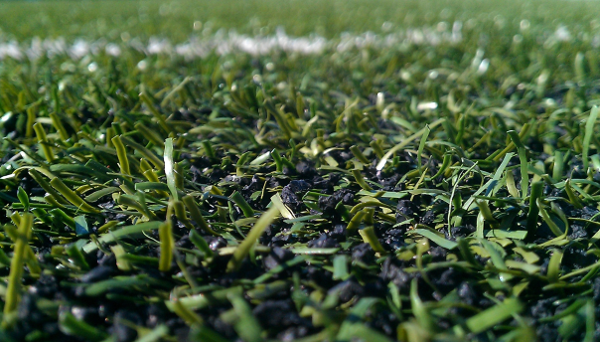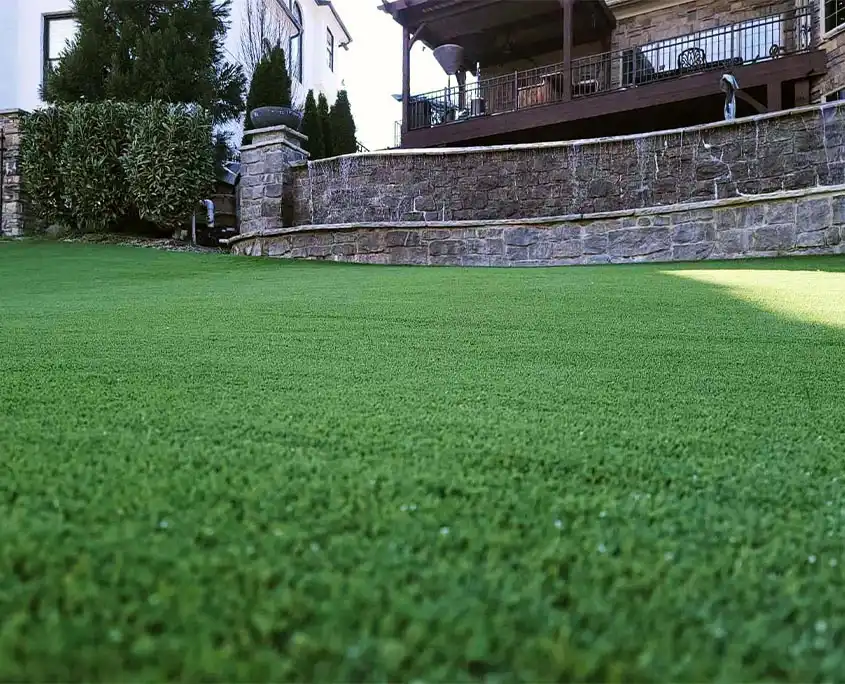Premium Arizona Turf Installation Services for Residences and Commercial Properties
Premium Arizona Turf Installation Services for Residences and Commercial Properties
Blog Article
Look Into the Environmental Perks of Opting for Synthetic Grass Solutions
The fostering of synthetic grass options provides a compelling chance to deal with pressing ecological difficulties. By substantially reducing water use and minimizing the application of dangerous chemicals, these options not only promote lasting landscape design but likewise safeguard regional environments. Furthermore, the lower carbon footprint linked with reduced maintenance activities adds to a more lasting method to land monitoring. The ramifications of these benefits expand beyond simple preservation initiatives, elevating concerns about their lasting impact on environment conservation and overall eco-friendly equilibrium. Discovering these measurements reveals a complicated interaction worth considering.
Water Preservation Perks
One of the most considerable benefits of fabricated turf is its ability to save water. In comparison, synthetic grass does not need watering, substantially decreasing the general need for water resources.
By getting rid of the demand for routine watering, synthetic grass contributes to sustainable landscape practices and aids minimize the ecological impact of excessive water intake. Furthermore, the preservation of water extends to the decrease of overflow, which can result in soil erosion and waterway pollution.
Additionally, the installment of man-made lawn enables towns and home owners to designate water sources extra successfully, concentrating on crucial uses such as alcohol consumption water and farming. The shift in the direction of synthetic grass not just advertises liable water use yet likewise aligns with more comprehensive ecological objectives intended at protecting natural deposits.
As areas increasingly prioritize sustainability, the water preservation benefits of fabricated turf present an engaging situation for its adoption in domestic and industrial landscape design tasks.
Minimized Chemical Usage
The transition to fabricated lawn significantly lowers the dependence on chemical treatments typically made use of in natural yard upkeep. Conventional grass administration typically entails the application of herbicides, pesticides, and fertilizers to advertise development and control bugs. These chemicals can posture risks to human wellness, regional wild animals, and the atmosphere, contributing to soil and water contamination.
In contrast, fabricated turf removes the need for these dangerous materials. By lessening the release of artificial compounds right into the ecosystem, fabricated turf advertises much healthier soil and water systems.
Additionally, the lack of chemical runoff connected with man-made turf setups aids shield regional rivers from contamination, supporting water life and preserving biodiversity. Arizona artificial turf. As areas increasingly focus on sustainable methods, opting for synthetic grass offers a practical remedy that aligns with environmental preservation objectives. Through this shift, home proprietors can appreciate lavish eco-friendly spaces without jeopardizing eco-friendly wellness, leading the way for an extra lasting future
Lower Carbon Impact

Furthermore, the setup of artificial grass can cause considerable water conservation. All-natural lawns call for considerable amounts of water for watering, which not only includes in the carbon footprint related to water extraction and treatment yet additionally strains neighborhood water resources. In contrast, synthetic grass requires very little maintenance, calling for no watering, thereby considerably decreasing water usage and its associated power prices.
Additionally, the longevity of synthetic grass adds to its decreased carbon influence. With a life expectancy of up to 15 years or more, the requirement for frequent substitutes is decreased, resulting in less waste and reduced power usage in manufacturing and taking care of standard grass alternatives. Overall, synthetic grass provides a lasting option for ecologically aware landscaping.
Environment Preservation
Environment preservation is a critical factor to consider in the debate over landscaping choices, especially when contrasting fabricated turf to all-natural lawn. All-natural look at this site grass lawns frequently call for considerable maintenance, including the usage of chemicals, herbicides, and plant foods, which can negatively impact local environments. These chemicals can leach right into the soil and waterways, damaging native vegetation and animals and disrupting regional habitats.
Artificial turf eliminates the requirement for unsafe chemicals, therefore safeguarding neighboring wildlife and preserving the honesty of surrounding ecological communities. The installment of synthetic grass have a peek at this website can lead to the conversion of previous lawn locations right into even more biodiverse landscapes, such as pollinator gardens or indigenous plant locations, which can support local wild animals.
Inevitably, the shift to man-made grass not only conserves water and reduces maintenance initiatives yet likewise fosters a much more harmonious partnership between human tasks and the native environment, promoting habitat preservation at the same time.
Long-Term Sustainability
Long-lasting sustainability is an important consider evaluating the benefits of man-made grass over standard turf lawns. Among one of the most substantial benefits of synthetic grass is its durability; it can last up to 15-20 years with marginal maintenance, whereas all-natural lawn needs regular reseeding and substitute. This durability reduces the requirement for constant resources, such as water, plant foods, and chemicals, which are vital for preserving a healthy and balanced grass lawn.
In addition, synthetic lawn contributes to a reduction in carbon discharges connected with grass care tools. Typical lawns often need gas-powered lawn mowers, leaners, and blowers, every one of which add to air contamination. Turf installation phoenix az. In comparison, synthetic lawn eliminates blog the requirement for such tools, promoting a cleaner atmosphere
In addition, the production of man-made grass increasingly uses recycled products, improving its sustainability profile. As suppliers adopt green practices, the environmental impact of synthetic grass continues to diminish.

Conclusion
The adoption of man-made lawn services provides significant ecological advantages, consisting of considerable water conservation, reduced dependence on damaging chemicals, and a reduced carbon impact. Additionally, man-made grass aids in protecting all-natural environments by lessening land disruption and promoting long-term sustainability with using long lasting products. Collectively, these aspects highlight the possibility of man-made turf to contribute favorably to ecological health and wellness and supply a feasible choice to standard landscaping techniques in a significantly resource-conscious world.
In contrast, man-made lawn does not need watering, substantially decreasing the general demand for water resources. By lessening the launch of artificial compounds into the ecosystem, synthetic turf promotes much healthier soil and water systems.
Furthermore, the installment of synthetic lawn can result in substantial water preservation. In contrast, synthetic lawn needs marginal maintenance, calling for no watering, therefore dramatically reducing water usage and its associated power costs.

Report this page